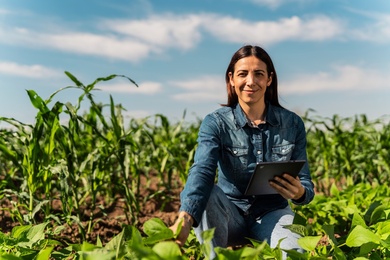Switching Lenses for Development: How to Use Gender-Lens Investment for Equality

Closing the gender gaps in companies will lead to an evident improvement in the productivity and competitiveness rates in Latin America and the Caribbean (LAC). Let’s help the private sector get all hands on deck.
Only 49% of women in the region have a bank account, only 11% have savings, and 10% have credit available, according to UN estimations. In addition, 1% of female entrepreneurs (compared to 7% of their male counterparts) can access private equity funds, angel investors, or seed capital to fund their businesses.
In order to close this gap, we need to invest more smartly and responsibly. This idea is called “gender lens investment” (GLI), which also seeks to have great social impact and a safe, sustainable long-term ROI, bringing about profitability while pushing for gender equality.
 So, how do we achieve this?
So, how do we achieve this?
A first lens is focused on investing in companies that promote female leadership within their organizations. This goes from the workforce to their boards and/or investment committees. The second one consists in investing in businesses or companies that are owned and/or run by women. The third one encourages investment in companies that develop products and services that improve women’s quality of life.
This question was recently discussed at Decididas, an event around women’s opportunities and challenges, held in Mexico City leading to the celebration of International Women’s Day. At a panel with female entrepreneurs and finance professionals, Maria Ariza, CEO at Bolsa Institucional de Valores (BIVA), told us about the importance of including women in boards of directors. In her opinion, “everything permeates from the top down. From the very awareness of a corporate management in which diversity seeks to trigger fair initiatives across institutions (…) this causes immediate changes down the line.”
The companies that include and empower women in the different stages and hierarchical places of their business perform better, and are more productive than those which don’t. At this discussion, we mentioned a very illustrative example taken from the Council on Foreign Relations’ report: Latin America’s GDP could increase up to 26% in average by closing the gaps between women and men in the workforce.
For example, investment funds with gender balance in their investment portfolio shrink their risk profile and improve their profitability. The companies with more diverse chains of command make better strategic decisions, are likely to be more productive and are better positioned to compete in the market. And financial institutions that increase their investment in female clients benefit from a lower default rate and higher loyalty in the long term.
This data was also confirmed by another panelist at event Decididas. Leticia Robles, VP Corporate Affairs at Konfío —a fintech that helps small and mid-sized enterprises, and has been supported by IDB Invest with gender advisory services— explained that “SMEs we support grow by 25% when they have access to credit. But, when the data is segregated between men-led and women-led companies, we realize the former grow by 19%, whereas the latter grow by 40%”.
The advantages of this type of investments cannot be denied, and, as in IDB Invest we aim at generating a positive impact in LAC, we have devoted ourselves to including the “new development lenses” into everything we do. How do we do it?
First, we set up conditions for our investment. For example, in order for us to invest in a fund, there must be at least a woman in their investment committees. If they don’t, we just don’t participate.
Also, we tie our loans to gender actions, in order to encourage hiring women in areas that have traditionally been male-dominated, for instance. Thanks to this, 15% of the workforce engaged in construction and maintenance tasks at a solar plant in Brazil is female.
In the financial industry, we have increased access to credit in specific sectors, by granting more loans to women in the agricultural business who live in rural areas in Ecuador with Banco Pichincha, for example.
It is worth mentioning that, apart from what we do for our clients, we have refined our vision internally. We have a gender equality strategy that scrutinizes the salary gap, the gender gap in terms of responsibilities, the ability of our institution to offer work-life balance, and the promotions and hiring system, for instance.
Thanks to these measures, we have received the EDGE certification three times in a row; this certification recognizes IDB Invest’s achievements and efforts to encourage an equitable workspace. It is time for all of us to invest in new lenses to see the positive dimensions that expand when we consider diversity, inclusion and gender equality.
LIKE WHAT YOU JUST READ?
Subscribe to our mailing list to stay informed on the latest IDB Invest news, blog posts, upcoming events, and to learn more about specific areas of interest.
Subscribe



